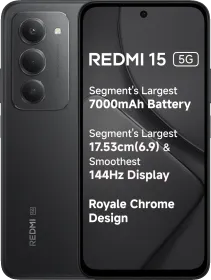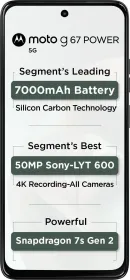TL;DR
- Meta’s first display-equipped smart glasses, code-named Hypernova, are set to launch next month.
- At around $800, far cheaper than expected.
- Google is also readying its own Android XR glasses powered by Gemini AI.
Meta’s next bet on smart glasses could be cheaper than expected, though not exactly cheap. According to a Bloomberg report, the company has figured out a way to price its upcoming display-equipped smart glasses, code-named “Hypernova,” at around $800. That’s a significant cut from earlier expectations of $1,000–$1,400, and a strategic move to make the product more accessible, at least compared to Apple’s $3,500 Vision Pro or even the $1,500 Meta Quest Pro headset.
For India, that translates to roughly ₹70,000 before taxes and duties, putting Meta’s new glasses in the same ballpark as high-end flagship smartphones like the iPhone 15 Pro or Galaxy S25 Plus or OPPO Find X8 Pro or vivo X200 Pro. Meta wants these glasses to feel like an upgrade that can keep you updated without relying on a smartphone.

What’s new with Hypernova?
Unlike Meta’s existing Ray-Ban Meta glasses, which launched in India recently, Hypernova will ship with a small display built into the bottom-right lens. It will act as a notification hub in your field of vision where users will be able to read messages, alerts, photos, and mini apps projected without needing to glance at your phone.
Control is expected to come via a neural wristband, a wearable accessory Meta has been quietly developing for years. The strap picks up subtle electrical signals from your wrist to translate finger movements into commands, a far more discreet control system than waving your arms in public. Reports suggest that Meta also has plans to expand beyond the glasses, and they could eventually make a smartwatch and camera-embedded earbuds, which can be used to pair with a Hypernova glass.
Why the lower price matters
Meta’s decision to slash margins and price Hypernova at $800 could work as the company plans to build adoption now, profit later. It’s the same strategy that made smartphones mainstream in India over the past decade, with companies like Xiaomi and OnePlus offering high-end features at aggressive prices to capture the market.
At $800, Hypernova is still far from an “affordable” device in the US where devices like Google Pixel 9a, iPhone 16e and Samsung Galaxy S24 FE are available for cheaper price. But it undercuts competitors in the XR space dramatically, offering something closer to a high-end phone upgrade instead of a luxury gadget that costs as much as a used car.
The road to true AR
For now, Meta’s glasses will remain an accessory tethered to your smartphone, not a standalone device. That’s in line with the company’s longer-term roadmap. The Orion prototype, a bulkier AR headset with external computing hardware, is reportedly planned for developers in 2026. By then, Meta hopes to have the apps and ecosystem ready to make AR glasses a true replacement for your phone.
For now, Meta plans to keep Hypernova priced close to premium phones while ensuring compatibility with WhatsApp, Instagram, and Facebook so that it stands a chance of becoming the first mainstream smart glasses platform.
The bigger picture
Apple’s Vision Pro showed what’s possible when money is no object. Meta’s Hypernova is aiming for the opposite: what’s possible when you need to sell in the hundreds of thousands, not just impress at launch events. And in a market like India, where smartphone upgrades are the biggest tech splurge most people make, an $800 pair of glasses that promises the first real taste of AR.
Meta, however, isn’t about to let Google take the AR spotlight uncontested. Google is already building its own glasses on the Android XR platform, with Gemini AI baked in at the core. Bloomberg reports that Meta’s Hypernova glasses will still lean on the Meta View app for most of their functionality, while Google is betting big on Gemini AI to make its glasses feel indispensable. While we don’t know the timeline for Google’s XR products, Meta Hypernova could make it debut as early as next month.
You can follow Smartprix on Twitter, Facebook, Instagram, and Google News. Visit smartprix.com for the latest tech and auto news, reviews, and guides.


































